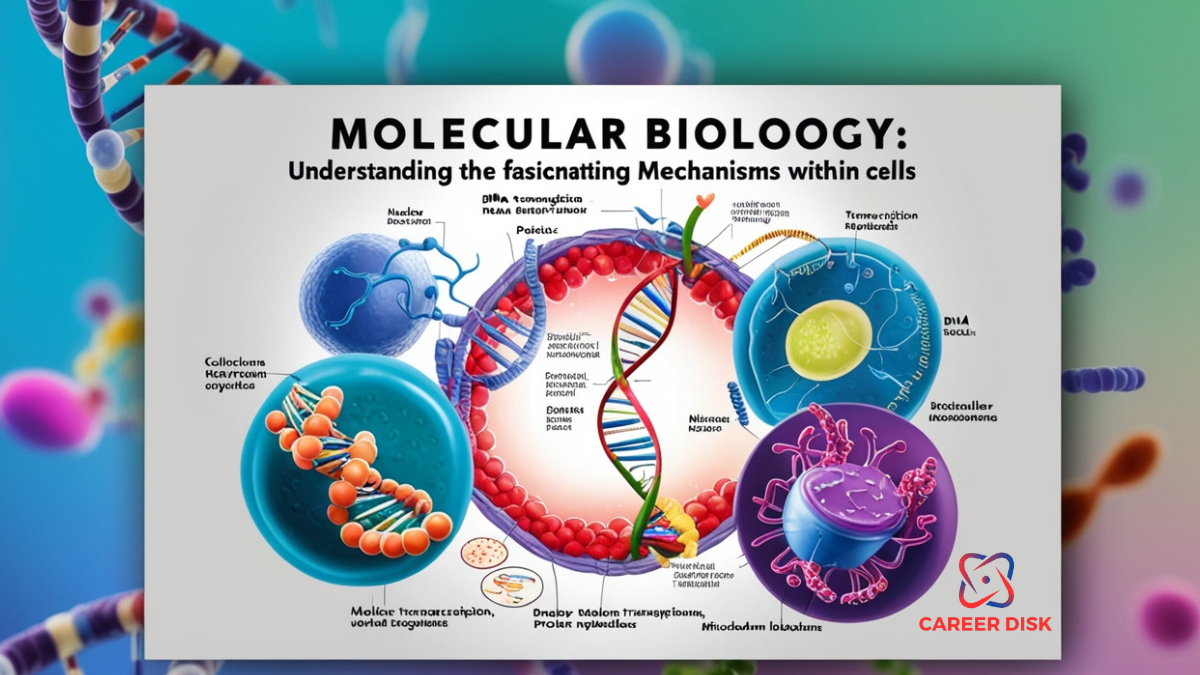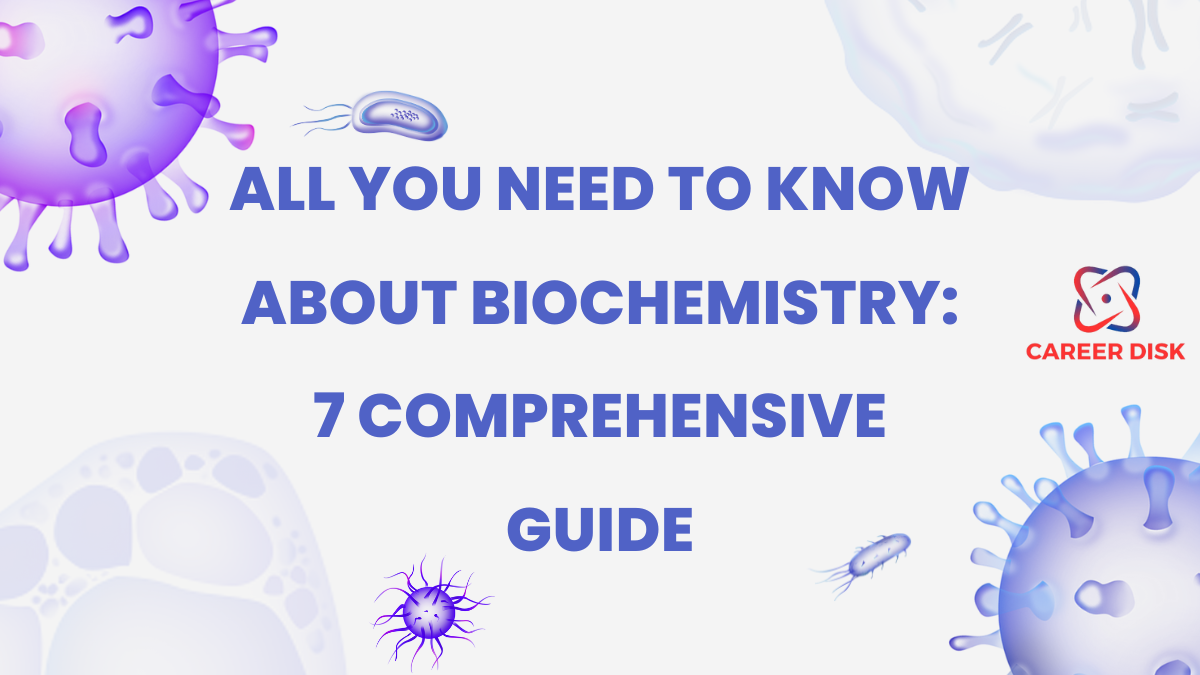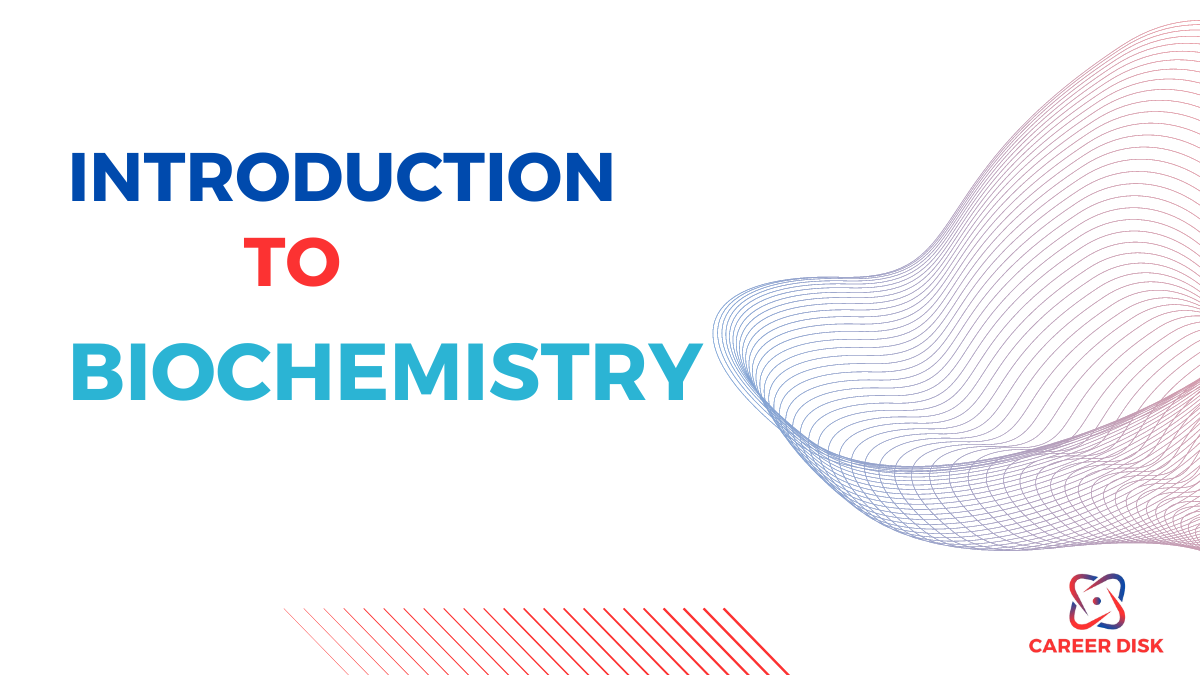
In a world where genes can be edited to treat inherited diseases, and crops can be engineered to withstand climate change, the secrets of life itself are being solved, molecule by molecule. Welcome to the fascinating world of molecular biology.

Molecular Biology Basics
- Definition and scope of molecular biology.
- Key components and processes within cells.
In this section, we’ll cover the fundamental concepts of molecular biology, including DNA, RNA, proteins, and cellular processes like replication, transcription, translation, and cellular metabolism. These aspects are vital for learning the complex mechanisms that guide cellular function and behavior.
What is Molecular Biology
Molecular biology is the study of biology at a molecular level, focusing on the structure, function, and regulation of biological macromolecules such as nucleic acids and proteins.
It seeks to understand the interactions between the various systems of a cell, including the interrelationship of DNA, RNA, and protein synthesis and how these interactions are regulated.
Components of Molecular Biology
The components of molecular biology include genetics, biochemistry, and cell biology. Molecular biologists study the structure and function of macromolecules such as proteins and nucleic acids, their interactions, and how they are regulated.
They also study the molecular mechanisms within cells, including DNA replication, transcription, and translation.
Gene Expression and Regulation
How are Genes Expressed?
Genes are expressed through a process called gene expression, which involves the transcription of DNA into RNA and the translation of RNA into proteins. This process is highly regulated and involves complex interactions between various molecules within the cell.
Gene expression can be influenced by environmental factors, developmental cues, and signaling pathways, and it plays a very important role in determining the function and behavior of different cell types in an organism.

The Central Dogma Of Molecular Biology
The central dogma of molecular biology describes the flow of genetic information within a biological system:
DNA (Deoxyribonucleic Acid): this is the genetic material that stores information in the form of nucleotide sequences.
Transcription: this is the process of copying a segment of DNA into RNA (Ribonucleic Acid)
RNA Processing: In Eukaryotes (organisms whose cells have a nucleus enclosed within membranes), primary RNA transcripts (pre-mRNA) undergo modifications such as splicing, and capping to become mature mRNA.
Translation: in translation, ribosomes read mRNA sequences to synthesize proteins, with the help of tRNA (transfer RNA) and rRNA (ribosomal RNA).
Mechanism of Gene Expression

Gene expression is the process by which the information encoded in a gene is used to synthesize a functional gene product, typically a protein directly. This process can be divided into several key steps: transcription, RNA processing, translation, and post-translational modifications. Let’s go further to explain these key steps in detail.
1. Transcription
Transcription is the first step in gene expression, where a particular segment of DNA is copied into RNA by the enzyme RNA polymerase.
- Initiation: Transcription begins when RNA polymerase binds to a specific region of the gene called the promoter. This binding is facilitated by transcription factors that help RNA polymerase recognize the promoter.
- Elongation: RNA polymerase moves along the DNA template strand, synthesizing a complementary RNA strand by adding RNA nucleotides (adenine, uracil, cytosine, and guanine) in the 5′ to 3′ direction.
- Termination: Transcription ends when RNA polymerase reaches a terminator sequence on the DNA, causing the enzyme to detach and release the newly synthesized RNA molecule.
2. RNA Processing
In eukaryotic cells, the primary RNA transcript (pre-mRNA) undergoes several processing steps before it becomes a mature mRNA molecule that can be translated.
- Capping: A 5′ cap (a modified guanine nucleotide) is added to the 5′ end of the pre-mRNA. This cap protects the RNA from degradation and helps ribosome binding during translation.
- Polyadenylation: A poly-A tail (a stretch of adenine nucleotides) is added to the 3′ end of the pre-mRNA. This tail also protects the RNA from degradation and aids in exporting the mRNA from the nucleus to the cytoplasm.
- Splicing: Non-coding regions called introns are removed from the pre-mRNA, and the remaining coding regions called exons are joined together. This process is carried out by a complex known as the spliceosome.
3. Translation
Translation is the process by which the mRNA is decoded to build a protein.
- Initiation: The small ribosomal subunit binds to the mRNA near the 5′ cap and scans for the start codon (AUG). The initiator tRNA, carrying methionine, then binds to the start codon, and the large ribosomal subunit joins to form the complete ribosome.
- Elongation: The ribosome moves along the mRNA, one codon at a time, bringing in the appropriate tRNA with its attached amino acid. The ribosome facilitates the formation of peptide bonds between the amino acids, elongating the polypeptide chain.
- Termination: Translation ends when the ribosome reaches a stop codon (UAA, UAG, or UGA). Release factors bind to the ribosome, prompting it to release the finished polypeptide chain and disassemble.
4. Post-Translational Modifications
After translation, the newly synthesized protein may undergo various modifications that are crucial for its proper function, localization, and stability.
- Folding: The polypeptide chain folds into its three-dimensional structure, often assisted by chaperone proteins.
- Cleavage: Some proteins are synthesized as inactive precursors that need to be cleaved to become active.
- Phosphorylation, Glycosylation, and Other Modifications: Proteins can be modified by the addition of phosphate groups, carbohydrate chains, and other chemical groups. These modifications can affect the protein’s activity, stability, and interactions with other molecules.
Regulation of Gene Expression
Gene expression is tightly regulated at multiple levels to ensure that the correct proteins are produced at the right times and in appropriate amounts.
Genes can be regulated at different stages, each stage controls specific aspects of protein production.
- Transcriptional Regulation: Involves the control of transcription initiation through promoter accessibility and transcription factor binding.
- Post-Transcriptional Regulation: Includes mRNA processing, export, stability, and translation efficiency.
- Translational Regulation: Controls the initiation and rate of protein synthesis.
- Post-Translational Regulation: Involves modifications and degradation of proteins.
What is a Protein and its Structure?

Proteins are essential molecules that play a variety of roles in biological systems. Their structure is directly related to the roles they play in the human body. There are four levels of structural organization of proteins:
- Primary Structure: This is the linear sequence (single and unbranched chain) of amino acids in a protein, held together by peptide bonds. The order of these amino acids determines the protein’s ultimate shape and function.
- Secondary Structure: This involves the local folding of the protein chain into structures like alpha-helices and beta-sheets, stabilized by hydrogen bonds between the backbone atoms.
- Tertiary Structure: This is the overall three-dimensional shape of a single polypeptide chain, formed by interactions between the side chains (R groups) of the amino acids. These interactions include hydrogen bonds, ionic bonds, hydrophobic interactions, and disulfide bridges.
- Quaternary Structure: Some proteins consist of more than one polypeptide chain. The quaternary structure is the arrangement of these multiple subunits and their interactions.
Function of Proteins
Proteins perform a wide collection of functions in cells, which include:
- Enzymatic Activity: Proteins can act as enzymes, catalyzing biochemical reactions essential for metabolism and other cellular processes.
- Structural Support: Proteins like collagen and keratin provide structural support to cells and tissues.
- Transport and Storage: Hemoglobin transports oxygen in the blood, while ferritin stores iron in the liver.
- Signaling: Proteins like hormones and receptors are involved in cell signaling pathways, allowing cells to communicate and respond to their environment.
- Movement: Proteins such as actin and myosin are involved in muscle contraction and cell movement.
- Defense: Antibodies are proteins that play a crucial role in the immune response by identifying and neutralizing pathogens.
Applications of Molecular Biology

- Biotechnology: Genetic engineering to create genetically modified organisms (GMOs) for agriculture, producing crops with improved traits like pest resistance and higher yields.
- Medicine: Development of personalized medicine, gene therapy, and new vaccines. Techniques like CRISPR are used for precise gene editing to treat genetic disorders.
- Forensics: DNA profiling for criminal investigations and paternity testing.
- Environmental Science: Bioremediation uses microorganisms to clean up pollutants and synthetic biology to develop biofuels.
Learn More>>>
Conclusion
Molecular biology has greatly transformed our understanding of life at the cellular and molecular levels. Its biotechnology, medicine, forensics, and environmental science applications show its vast potential to address real-world problems. As molecular biology continues to evolve, it promises to revolutionize numerous fields and improve the quality of life worldwide.
Previous Related Articles
What you don’t know about Biochemistry: Introduction
Comprehensive Guide for students who wish to study Biochemistry.
Discover more from Career Disk
Subscribe to get the latest posts sent to your email.





